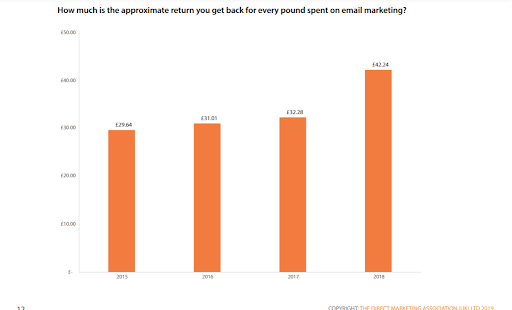Online shopping has become very popular across the globe. Did you know the number of digital buyers has reached a vast 2.64 billion in 2023? And this will only continue to increase in 2024.
In fact, retail eCommerce revenue will reach a whopping 6.38 trillion US dollars in 2024.

So, it wouldn't be wrong to say that the eCommerce market is full of opportunities. Moreover, with a vast number of readymade eCommerce platforms available, you can quickly start an online store.
However, establishing an online business and making it successful are two different ball games altogether.
This post will walk you through some common eCommerce mistakes that you should steer clear of when setting up your online business.
6 Common eCommerce Mistakes To Avoid
- Not doing proper market research
- Not paying attention to business development
- Selecting a wrong eCommerce platform
- Poor website navigation and bad user experience
- Not paying attention to good website content
- Not leveraging analytics to boost the market growth
Scaling up your revenue and ensuring consistent business growth requires well-planned strategies. But, an online business plan can work only if you keep yourself away from making the following rookie eCommerce mistakes.
1. Not doing proper market research
If you are jumping on the eCommerce bandwagon without researching well, you will fail big time. Sure, you might earn a few bucks initially, but surviving will be difficult in the long run.
So, instead of waiting for the customers to show up, it’s a better idea to research the following aspects:
- Is there a demand for the product you are selling online?
- Who are your competitors?
- What are your customer's expectations?
You can get detailed and insightful data through these methods of research:
-
Primary research
Carry out online surveys, send questionnaires, and interview people face to face. The data you extract from these research methods will help you get actionable insights for your business.
For instance, if you set up a cosmetic store, you can send your target customers a questionnaire. Ask them what kind of makeup they like -- are they looking for something natural or organic? Do they want a particular skincare range?
The answers you receive will help you understand the kind of products your customer base will like.
-
Secondary research
Such research includes data from government and industry statistics.
Considering the example above, you can get a clear insight into the cosmetic needs of your prospective customer base through these statistics.
For instance, the natural cosmetic segment in the U.S. generated revenues of over $1.4 billion in 2021.
This industry statistic makes it clear that the consumption of natural cosmetics is high in the U.S.
As a result, including a natural cosmetic product line in your makeup store can work wonders for you.
In short, you should have a clear understanding of the needs of your target customer base. All in all, proper research helps you find the right customers while skyrocketing your revenues in no time.
2. Not paying attention to business development
You aced the research part and came up with a high-end product that's relevant to your customer base. Is that enough? No. Unless your customers know about your product, how are they going to buy it?
It is critical to market your product and services. Simply put, your product should reach the right customer base at the right time.
Email marketing proves highly profitable, with an average ROI of $36 for every dollar a company spends.
The retail, ecommerce, and consumer goods sector stands out, achieving an impressive $45 return on investment, highlighting their mastery in utilizing email campaigns to drive significant revenue.

3. Selecting the wrong eCommerce platform
An eCommerce platform is the first thing that defines your business. From how you will display your products to how you will leverage them for selling your products, an eCommerce platform can either make your business or break it.
A wrong eCommerce platform might have hidden costs. The possibility of scaling up your business with the wrong platform is also difficult.
Consider the following points when selecting an eCommerce platform:
- What kind of products or services do you want to sell?
- What are the tools you want to integrate into your website?
- What's your budget?
- Are you looking for a customized design or a templated one?
Once you have the answers to these questions, research the various platforms. Take feedback from your counterparts, browse online for reviews, and find the platform that best suits your business needs.
4. Poor website navigation and bad user experience
You will lose a large chunk of your revenue if your prospective customers can't find the product or service they are looking for. So, it is crucial to categorize your products so that customers can easily find what they want.
See how MAC Cosmetics makes navigation smooth for its customers. The categories are simple and to the point.

When you click on the menu, a sub-menu appears with a complete description:

The clear and crisp categorization certainly makes navigation easy and compelling for the customers. As a result, customers get a user-friendly experience.
5. Not paying attention to good website content
It is essential to generate organic traffic to increase your conversions. However, it is not possible without a stellar website content strategy.
Be it your business's homepage or product description, the content should be relevant to your target customer base. It is also essential to create content that's search engine optimized.
Besides, you should avoid generic content.
Create compelling website content that converts prospects into loyal customers.
6. Not leveraging analytics to boost the market growth
If you are not keeping track of the key metrics of your website, you won't ever be able to progress. Remember, there's always room for improvement.
Analyze metrics like website traffic, click-through rates, and cart abandonment rates. These metrics will give you an idea of how your online business is performing. This, in turn, will help you take corrective measures as and when needed.
Conclusion
Make sure you avoid the mistakes mentioned above. Start by understanding your target audience. Research your products well and make it a point to improve your site navigation and user experience.
Creating impeccable product copy and website content is also crucial for driving organic traffic. Besides, select an e-commerce platform that best suits your business's needs.
In a nutshell, create such an online shopping experience that can help you retain your customer base while attracting new ones. After all, your ecommerce business will grow only when you put your customers first.
Author Bio:
Adela Belin is a content marketer and blogger at Writers Per Hour. She is passionate about sharing stories with the hope of making a difference in people's lives and contributing to their personal and professional growth. Find her on Twitter and LinkedIn.

